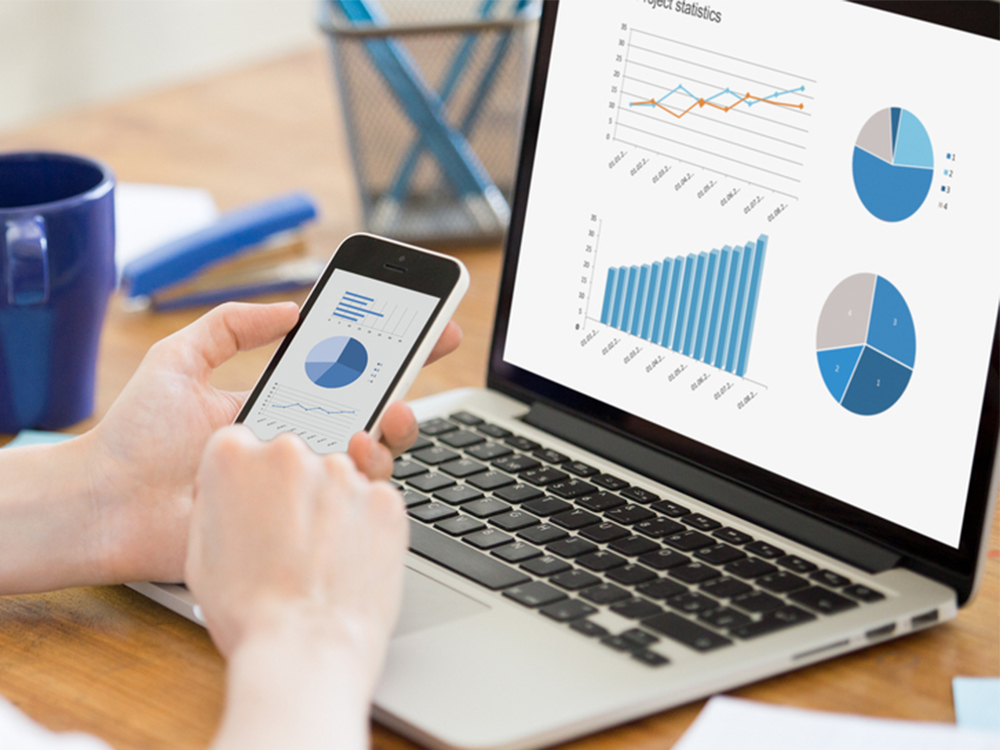In today’s fast-paced digital landscape, businesses are constantly seeking ways to gain a competitive edge and make informed decisions based on up-to-date information. This is where real-time big data analytics comes into play. By harnessing the power of big data and advanced analytics techniques, organizations can unlock real-time insights and drive data-driven success. In this article, we will explore the world of real-time big data analytics, its importance, and how it empowers organizations to make timely decisions at scale.
The Need for Timely Insights
In today’s fast-paced digital landscape, organizations face several challenges that traditional analytics methods struggle to address. Let’s explore some of the pain points that highlight the need for real-time big data analytics.
Timeliness of Insights
Traditional batch processing methods often suffer from a significant time delay between data collection and analysis. This delay can hinder organizations’ ability to respond quickly to changing market dynamics, customer preferences, or emerging trends. Real-time big data analytics bridges this gap by providing insights in real time, enabling organizations to make timely decisions based on up-to-date information. With real-time insights, businesses can seize opportunities, mitigate risks, and stay ahead of the competition.
Managing High-Velocity Data Streams
With the exponential growth of data, organizations are dealing with vast volumes of data generated from various sources, including social media, IoT devices, sensors, and online transactions. Traditional analytics methods struggle to handle the high velocity at which this data is generated. Real-time big data analytics frameworks are designed to handle and process these data streams in real time, allowing organizations to capture valuable insights as the data flows in. This capability enables proactive decision-making and empowers organizations to leverage data-driven opportunities.
Scalability and Performance
As data volumes continue to increase, scalability and performance become critical factors in analytics. Traditional analytics systems may face limitations in handling large-scale data processing, resulting in slow performance or system crashes. Real-time big data analytics frameworks are designed for scalability and can distribute data processing across multiple nodes, enabling parallel processing and ensuring optimal performance even with large data sets. This scalability ensures that organizations can keep up with the growing demands of data analytics without sacrificing speed or efficiency.
Complexity of Data Integration
Organizations often need to integrate data from multiple sources to gain a comprehensive view of their operations, customers, and market trends. However, data integration can be a complex and time-consuming process, especially when dealing with real-time data streams. Real-time big data analytics frameworks provide robust capabilities for data integration, allowing organizations to consolidate and analyze data from diverse sources in real time. This integration simplifies the data management process and provides a holistic view that enhances decision-making and business insights.
Real-Time Decision-Making
In today’s dynamic business environment, making informed decisions quickly is crucial. Traditional analytics methods may involve manual processes, extensive data preparation, and time-consuming analysis, which can delay decision-making and hinder agility. Real-time big data analytics enables organizations to analyze data as it streams in, providing immediate insights that support real-time decision-making. This agility allows businesses to respond rapidly to market changes, customer demands, and competitive threats, gaining a competitive edge and maximizing opportunities.
Benefits of Real-Time Big Data Analytics

Real-time big data analytics offers numerous benefits that empower organizations to achieve their goals and drive growth. Let’s explore some of these benefits:
1. Timely Decision-Making
One of the primary benefits of real-time big data analytics is the ability to make timely decisions. By analyzing data in real time, organizations can identify emerging trends, spot opportunities, and mitigate risks promptly. This agility in decision-making can significantly impact business outcomes, allowing organizations to stay ahead of the competition and capitalize on market opportunities.
2. Enhanced Customer Experience
In today’s customer-centric world, providing personalized and seamless experiences is vital for business success. Real-time big data analytics enables organizations to gain deep insights into customer behavior, preferences, and needs. By understanding customers in real time, businesses can deliver personalized offers, recommendations, and targeted marketing campaigns, ultimately enhancing the customer experience and driving customer loyalty.
3. Improved Operational Efficiency
Real-time big data analytics helps optimize operational efficiency by enabling organizations to monitor and analyze key performance indicators (KPIs) in real time. By tracking metrics such as production throughput, supply chain performance, and equipment maintenance, businesses can identify bottlenecks, optimize processes, and proactively address issues before they escalate. This leads to cost savings, increased productivity, and streamlined operations.
4. Proactive Risk Management
Identifying and mitigating risks is crucial for business sustainability. Real-time big data analytics equips organizations with the ability to detect and respond to potential risks in real time. By monitoring data streams and applying advanced analytics techniques, businesses can identify anomalies, detect cybersecurity threats, and prevent fraudulent activities. This proactive approach to risk management helps safeguard the organization’s assets, reputation, and customer trust.
5. Data-Driven Innovation
Real-time big data analytics fuels data-driven innovation within organizations. By analyzing real-time data streams, organizations can uncover new opportunities, identify market trends, and gain insights into emerging customer needs. These insights can drive product development, inform business strategies, and support innovation initiatives. Real-time big data analytics acts as a catalyst for data-driven decision-making, fostering a culture of innovation and positioning organizations at the forefront of their industries.
Valuable Features of Real-Time Analytics
To fully grasp the potential of real-time big data analytics, it’s essential to understand the key features and capabilities that enable organizations to harness the power of data in real time. Let’s explore some of the prominent features:
1. Stream Processing
Stream processing is a fundamental feature of real-time big data analytics. It allows organizations to process and analyze data as it flows in real time. By ingesting and processing data streams concurrently, organizations can extract valuable insights, detect patterns, and trigger actions in real time. Stream processing frameworks such as Apache Kafka, Apache Flink, and Apache Storm provide the necessary tools and infrastructure to handle high-volume, high-velocity data streams and enable real-time analytics.
2. Event-Driven Architecture
Real-time big data analytics relies on event-driven architecture, where events represent significant occurrences or changes in the data. Event-driven systems capture and process events in real time, enabling organizations to respond immediately to critical events. This architecture facilitates real-time monitoring, alerting, and automated actions based on predefined rules or triggers. Event-driven platforms like Apache Pulsar and Apache Kafka help organizations build scalable and resilient event-driven systems for real-time analytics.
3. In-Memory Computing
In-memory computing is a key feature that accelerates real-time big data analytics. By storing data in memory instead of traditional disk-based storage, organizations can access and process data at lightning-fast speeds. In-memory computing platforms like Apache Ignite and Redis enable real-time data processing, querying, and analytics by leveraging the speed and scalability of memory-based storage. This feature enables organizations to perform complex calculations, queries, and aggregations on large datasets in real time.
4. Real-Time Dashboards and Visualization
Real-time big data analytics is incomplete without intuitive dashboards and visualizations that provide real-time insights in a visually appealing and user-friendly manner. Real-time dashboards enable organizations to monitor key metrics, visualize trends, and track performance indicators in real time. Visualization tools like Kibana, Tableau, and Grafana allow organizations to create interactive and dynamic visualizations that facilitate data exploration and decision-making. Real-time dashboards and visualizations empower users to gain immediate insights and make informed decisions based on up-to-date information.
5. Machine Learning and AI Integration
Real-time big data analytics can be enhanced by integrating machine learning and artificial intelligence (AI) capabilities. Machine learning algorithms can be trained on real-time data streams to detect anomalies, predict outcomes, and automate decision-making processes. Real-time big data analytics platforms often provide integration with popular machine learning frameworks such as TensorFlow and scikit-learn, enabling organizations to leverage advanced analytics and AI capabilities in real time. This integration allows organizations to unlock the predictive and prescriptive power of real-time big data analytics.
Real-World Use Cases

Real-time big data analytics has proven to be a game-changer for organizations across various industries. Let’s explore some real-world use cases that highlight the practical applications and benefits of this technology.
Fraud Detection and Prevention
Financial institutions face constant threats from fraudulent activities. Real-time big data analytics helps in detecting and preventing fraud by analyzing transactional data in real time. By monitoring patterns, anomalies, and suspicious activities, organizations can identify potential fraud instances and take immediate action to mitigate risks. This proactive approach not only safeguards financial institutions but also protects customers’ assets and trust.
Predictive Maintenance
In industries such as manufacturing and transportation, equipment downtime can have severe consequences. Real-time big data analytics enables predictive maintenance by monitoring sensor data, machine logs, and performance metrics in real time. By applying predictive models, organizations can detect early signs of equipment failure, schedule maintenance activities proactively, and avoid costly unplanned downtime. This leads to increased operational efficiency, reduced maintenance costs, and improved asset utilization.
Real-Time Customer Insights
Delivering personalized and seamless customer experiences is a top priority for businesses. Real-time big data analytics allows organizations to gather and analyze customer data from multiple touchpoints in real time. By integrating data from social media, website interactions, and customer support channels, businesses can gain real-time insights into customer behavior, preferences, and sentiments. These insights enable personalized marketing campaigns, targeted promotions, and tailored product recommendations, driving customer satisfaction and loyalty.
Supply Chain Optimization
Supply chain management is complex and requires efficient coordination of various processes. Real-time big data analytics enables organizations to optimize their supply chain operations by monitoring and analyzing data related to inventory levels, demand patterns, transportation routes, and supplier performance in real time. By gaining real-time visibility into the supply chain, organizations can identify bottlenecks, optimize logistics, and improve overall efficiency.
Cybersecurity Threat Detection
The increasing frequency and sophistication of cybersecurity threats pose significant challenges to organizations. Real-time big data analytics plays a crucial role in detecting and responding to cybersecurity threats in real time. By analyzing network traffic, log files, user behavior, and threat intelligence feeds, organizations can detect anomalies, identify potential breaches, and respond promptly to mitigate risks. This proactive approach helps in safeguarding sensitive data, protecting systems from attacks, and maintaining business continuity.
Conclusion
In today’s fast-paced and data-driven business landscape, organizations cannot afford to rely solely on historical data for decision-making. Real-time insights have become paramount for staying competitive, adapting to dynamic market conditions, and delivering exceptional experiences to customers.
From improving operational efficiency and optimizing processes to enhancing marketing strategies and strengthening cybersecurity, the benefits of real-time big data analytics are far-reaching and transformative. It enables organizations to unlock the true value of their data and gain a competitive edge in the digital age.
Ready to unlock the power of real-time big data for your organization? Take the next step and explore how our solution can help you gain valuable insights and make data-driven decisions in real time. Visit our website at AI Data House to learn more and schedule a demo.
Don’t miss out on the opportunity to stay ahead of the competition, optimize your operations, and deliver exceptional customer experiences with real-time big data analytics.










